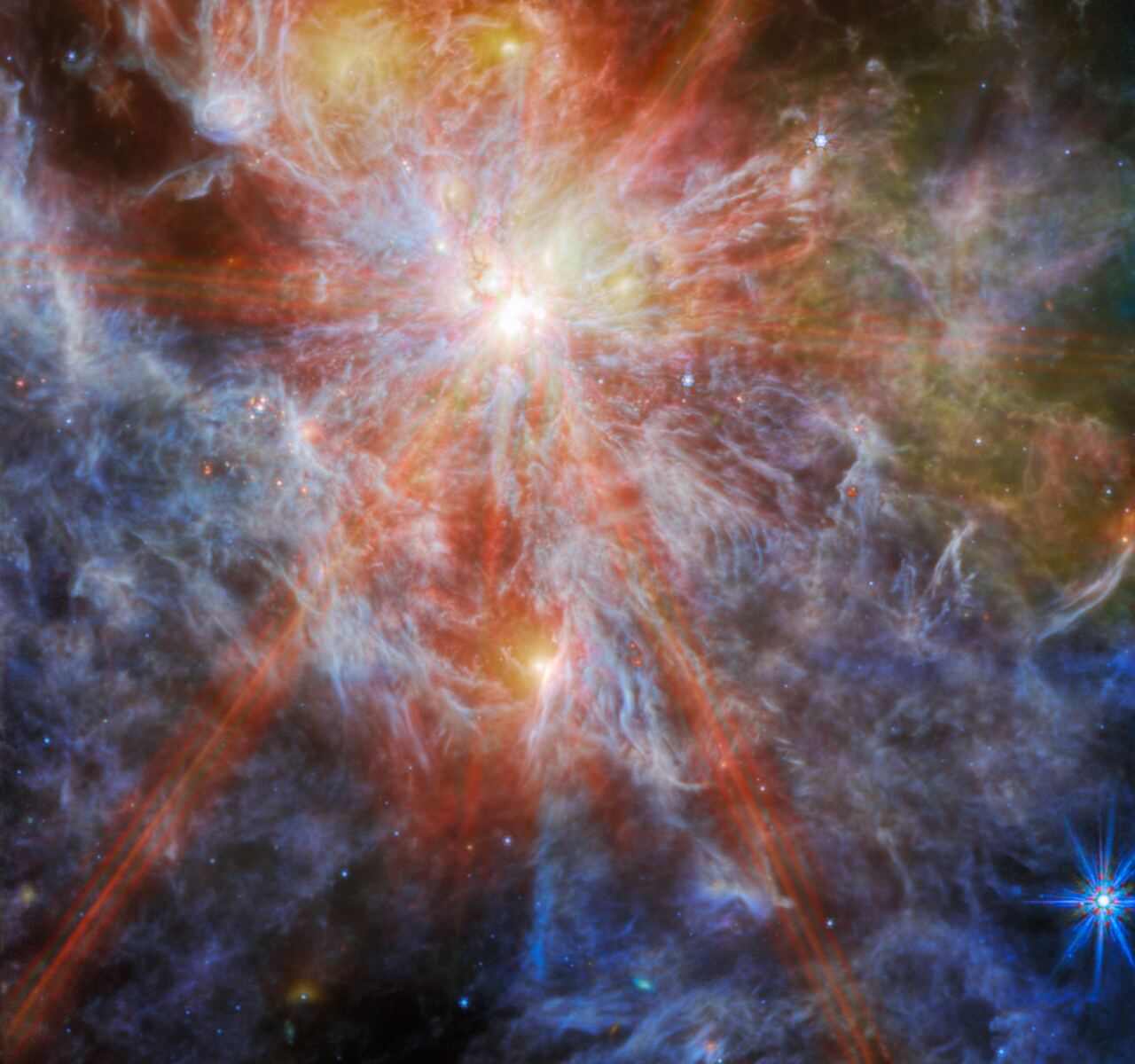The James Webb Space Telescope, a collaborative effort between NASA, the ESA, and the Canadian Space Agency (CSA), has revealed some stunning new images of the Universe. These images have not only been the clearest and most details views of the cosmos; they’ve also led to new insight into cosmological phenomena. The latest image, acquired by Webb‘s Mid-InfraRed Instrument (MIRI), is of the star-forming nebula N79, located about 160,000 light-years away in the Large Magellanic Cloud (LMC). The image features a bright young star and the nebula’s glowing clouds of dust and gas from which new stars form.
Continue reading “New Webb Image of a Massive Star Forming Complex”New Webb Image of a Massive Star Forming Complex

